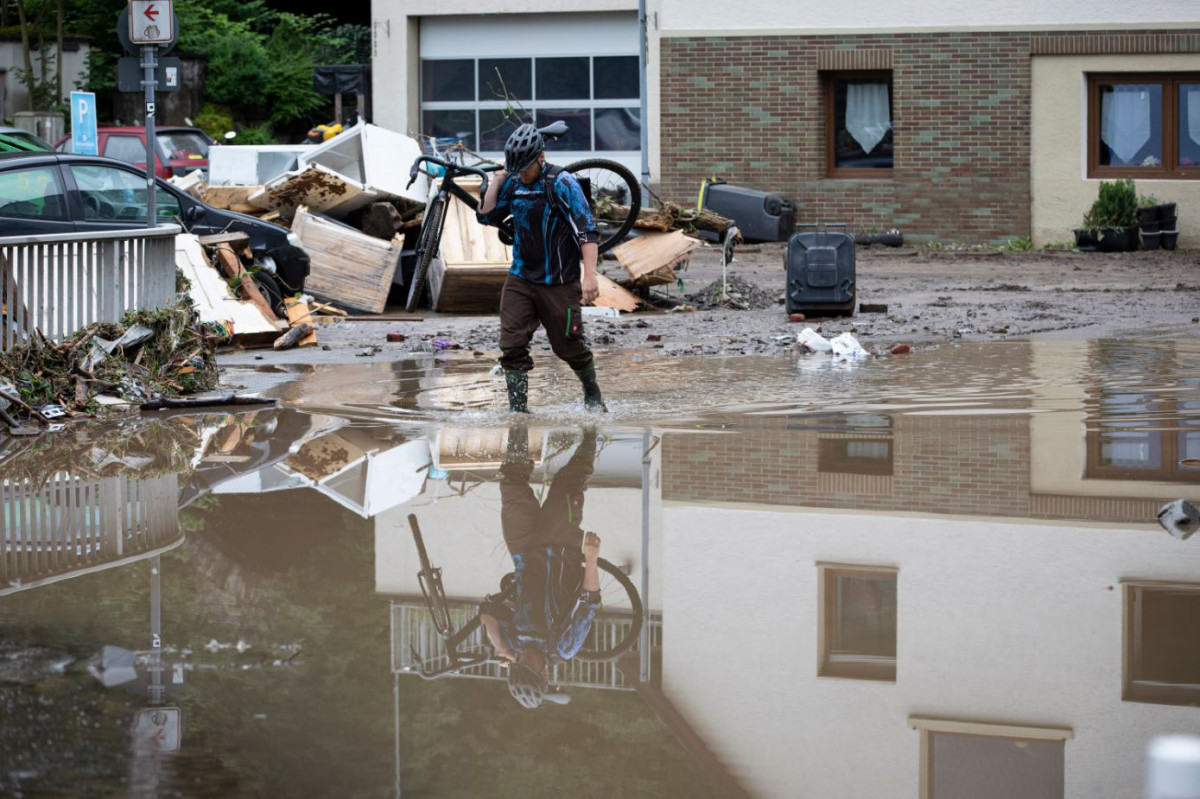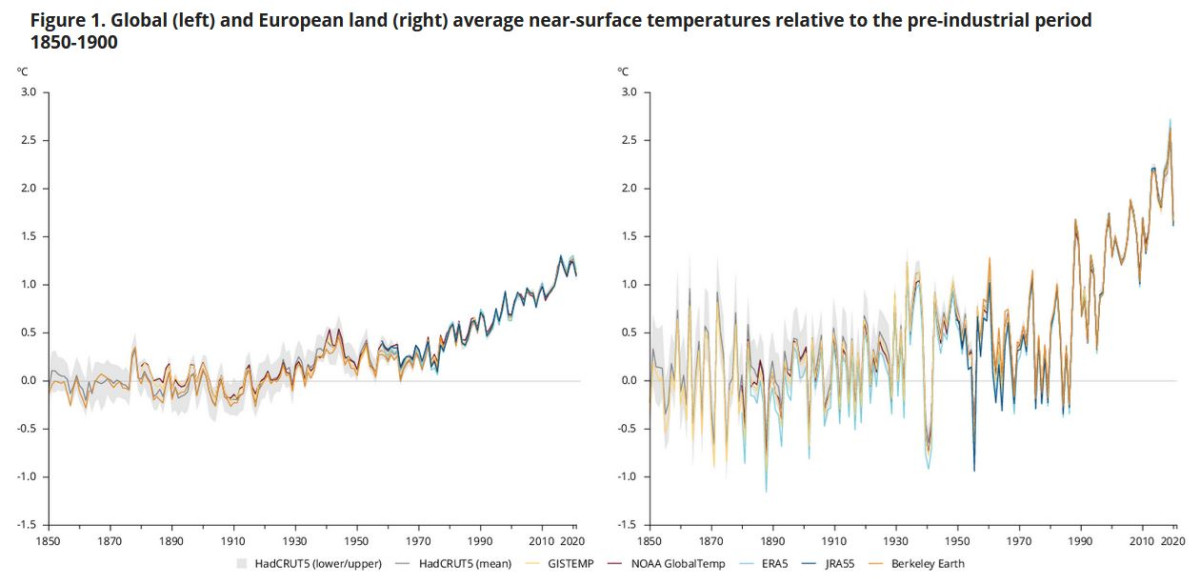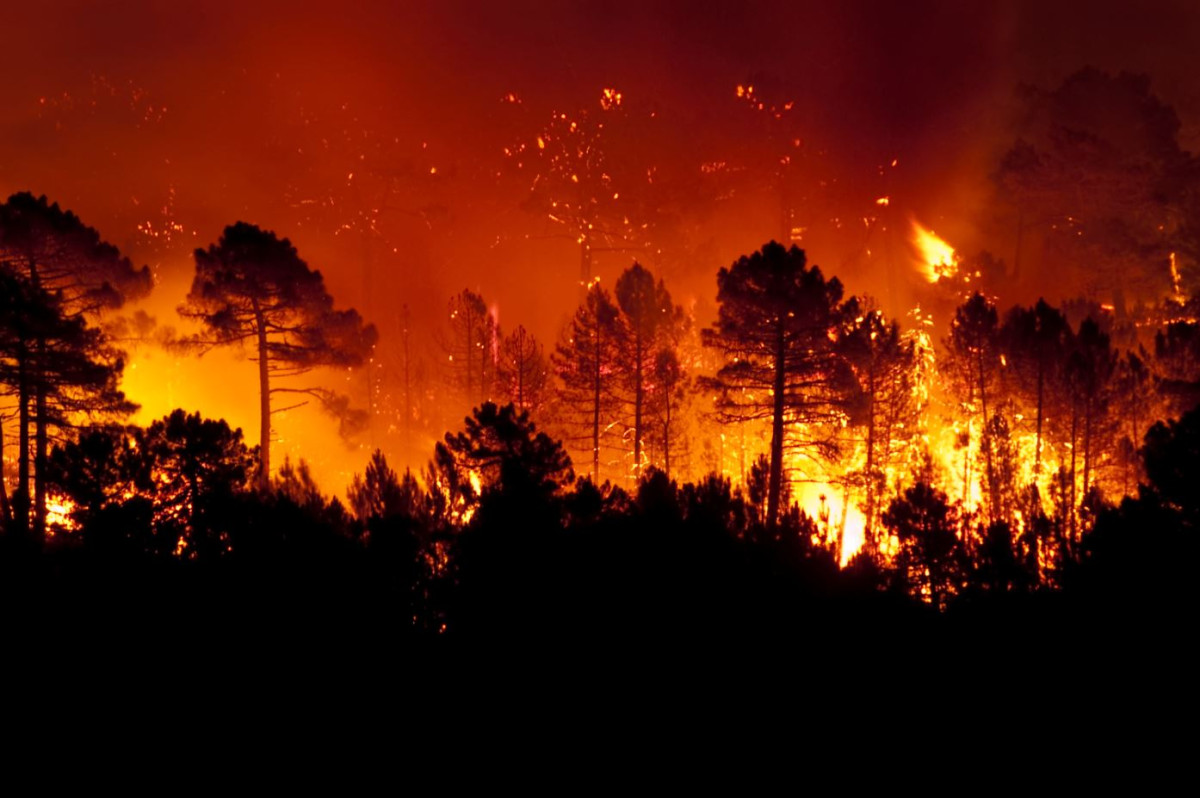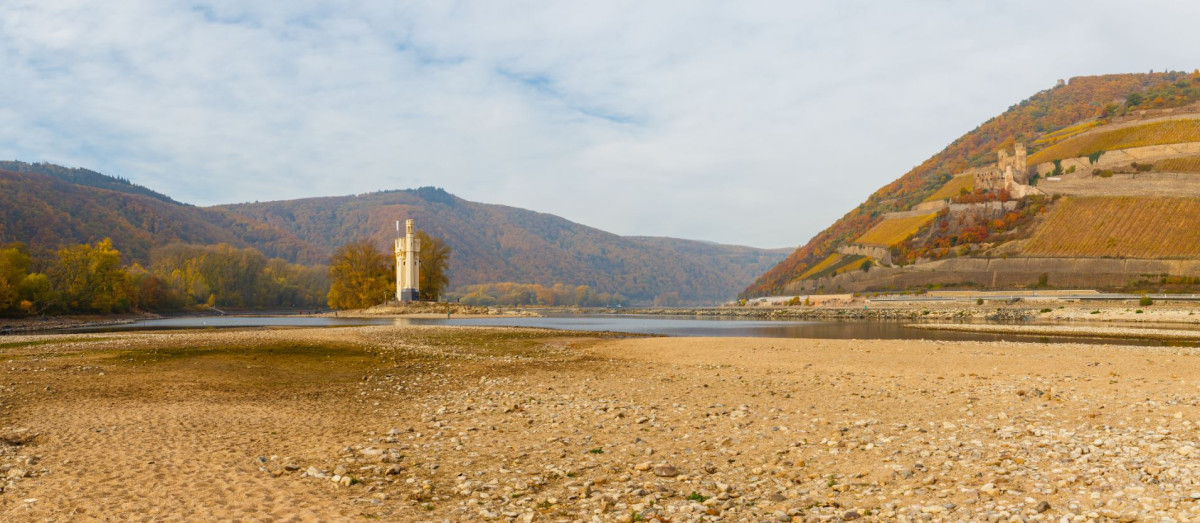Q&A - Why Europe needs to adapt to the impacts of climate change
Please note: This factsheet complements the article Extreme weather forces unprepared Europe to focus on climate adaptation.
Content
How fast is Europe warming?
Climate change is causing Europe to warm faster than anywhere else in the world. Temperatures in Europe have increased at more than twice the global average over the past 30 years, at an average rate of about 0.5°C a decade from 1991 to 2021. While the world as a whole has already warmed by around 1.2°C above pre-industrial levels, European land temperatures have increased almost 2°C.
In 2022, Europe recorded its hottest summer ever (the previous hottest summer was in 2021) and several prolonged and intense heatwaves across parts of western and northern Europe. Autumn 2022 was the third warmest on record — temperatures in October were nearly 2°C above average — while winter temperatures were around 1°C above average.
These record temperatures are not one-off events, but part of a trend. 2022 was Europe’s second warmest year on record, exceeded only by 2020, and the years 2019, 2015 and 2014 were only slightly cooler than 2022.
According to the Intergovernmental Panel on Climate Change (IPCC), greenhouse gas emissions globally must peak before 2025 at the latest and be reduced by 43 per cent by 2030 if there is any chance of holding global warming at 1.5°C. At the same time, methane emissions would need to drop by about a third. Even if all this were to be achieved, IPCC scientists agree “it is almost inevitable that we will temporarily exceed” the 1.5°C threshold, “but could return to below it by the end of the century”.
What impact is this having in Europe?
In addition to heatwaves, climate change is also causing many other extreme weather events to become more frequent and more severe. Persistent low levels of rainfall are becoming more common and when the rain does come, it is frequently in prolonged downpours, causing flooding. Fires are also becoming more intense and more common.
Drought: In 2022, southern and central Europe, in particular, experienced drought conditions, which impacted on agriculture, river transport and energy management.
Flooding: In the summer 2021, parts of Germany, Belgium and the Netherlands were hit by extreme floods. In Germany, entire villages and towns were inundated by several meters of water, buildings were destroyed and more than 180 people lost their lives. A disproportionate number of people from vulnerable population groups, such as the elderly or the disabled, were victims of the flood.
Wildfires: Extremely dry conditions in 2022 also led to unusually high fire activity in southwestern Europe. France, Spain, Germany, and Slovenia all experienced their highest summer wildfire emissions for at least the last 20 years in 2022.
Farming: Water and heat stress can substantially reduce yields of summer crops like grain maize, soybeans, and sunflowers, and push up prices.
River transport: On the Rhine, container ships were forced in the summer of 2022 to transport only a fraction of their usual cargo, leading to severe delays in deliveries and higher transport costs.
Energy management: This summer’s hot, dry spell hampered France’s nuclear output. Warmer rivers and lower water levels reduced the ability of its energy companies to cool nuclear reactors. Less water also reduced hydropower output.
How do we know this is happening because of climate change?
Science increasingly proves the links between extreme weather and climate change. The World Weather Attribution (WWA), a collaboration between climate scientists working around the world, is focused on examining this relationship.
WWA researchers found that climate change made the 2022 drought in Europe much more likely and that soil moisture drought will get worse as temperatures rise. These findings are consistent with projected long-term trends in climate models as reported for example by the IPCC.
“Every heatwave that occurs today would have been less hot and less frequent without climate change,” WWA scientists say.
What are the costs of extreme weather?
Reinsurer Munich Re estimated that the 2021 floods cost Germany around 33 billion euros, making it the most expensive natural disaster in the country to date.
The EU suffered around €14.5 billion in economic losses from 2011 to 2020 due to climate change related events, such as floods, heatwaves and droughts. Between 1980 and 2020, this figure rises to a total of €487, shows EEA data.
The highest economic losses, in absolute terms, in the period 1980-2020 were in Germany, France and Italy, while the highest losses per capita were recorded in Switzerland, Slovenia and France.
The Swiss Re Institute warns the global economy could lose up to 18 per cent of GDP by 2050 if no action is taken on climate change, with Europe set to lose around 11 per cent of its GDP.
Will we still need to adapt if we reduce emissions in line with the Paris Agreement?
Europe is already experiencing a plethora of impacts that can only be dealt with through adaptation, regardless of emission-cutting efforts. Climate modelling shows that warming beyond 1.5°C will dramatically increase the risk of extreme weather events, with more frequent and higher intensity wildfires, sea level rise, and more intense flooding and drought.
Meeting the 1.5°C goal will require steep reductions in carbon dioxide emissions, but most likely also “negative emissions” to reduce the levels of carbon dioxide already in the atmosphere. But at present, the world is on track for global temperatures to reach 2.8°C above pre-industrial levels by the end of the century, according to the latest Emissions Gap report from the UN Environment Programme, with the potential for the 1.5°C threshold to be reached within the next five to 10 years.





